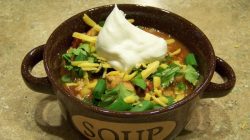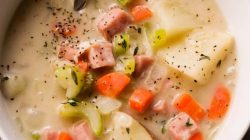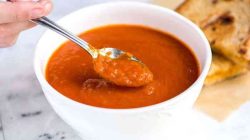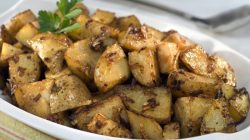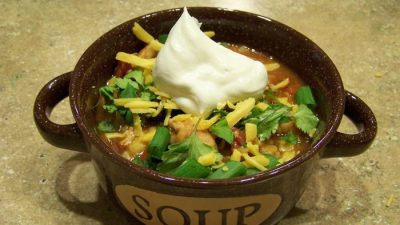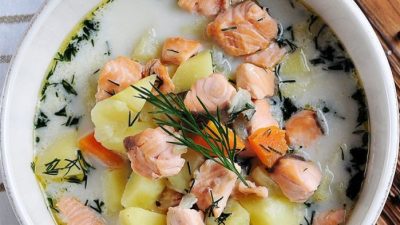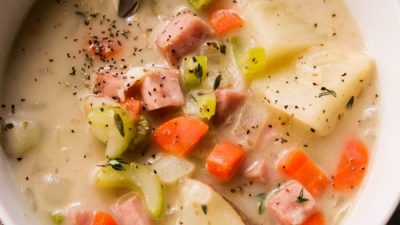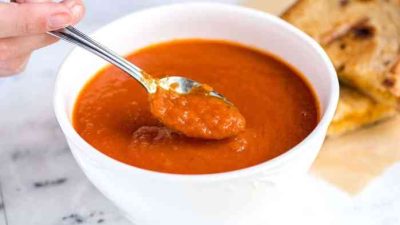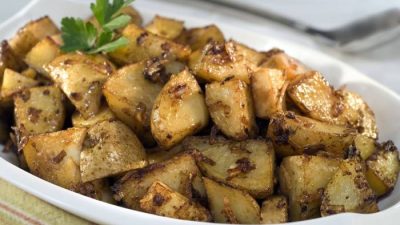Olive Garden Minestrone Soup Copycat Recipe Variations
Olive garden minestrone soup copycat recipe – This recipe explores the versatility of Olive Garden Minestrone soup by offering three delicious variations, each highlighting a different vegetable and showcasing unique flavor profiles. We’ll also delve into ingredient sourcing, cooking techniques, serving suggestions, and dietary adaptations to help you create the perfect bowl of minestrone.
Recipe Variations: Vegetable-Focused Minestrone
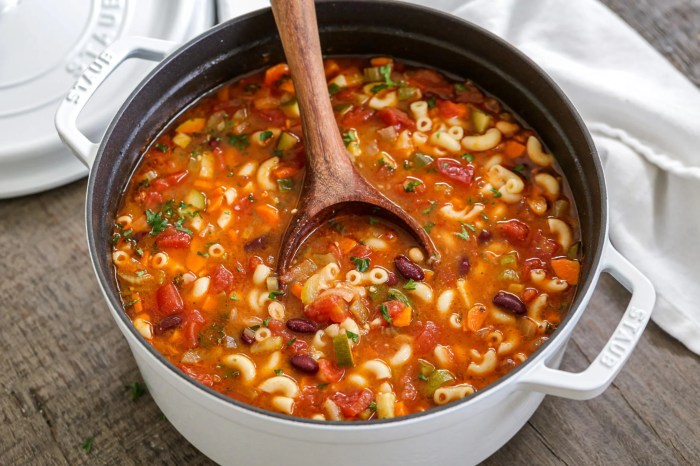
Source: momsdish.com
Three distinct variations are presented below, each emphasizing a different primary vegetable: a classic version, a spinach-rich option, and a butternut squash-infused variation. A nutritional comparison table follows, providing insights into the caloric and macronutrient content of each version.
| Variation | Calories (per serving) | Fat (g) | Protein (g) | Carbohydrates (g) |
|---|---|---|---|---|
| Classic Minestrone | 250 | 8 | 12 | 35 |
| Spinach Minestrone | 220 | 6 | 15 | 30 |
| Butternut Squash Minestrone | 280 | 9 | 10 | 40 |
The classic minestrone offers a balanced, hearty flavor profile with a subtle sweetness from the carrots and tomatoes. The spinach minestrone provides a more earthy and slightly bitter taste, complemented by the richness of the beans and pasta. The butternut squash minestrone delivers a creamy, sweet, and savory experience, with the squash’s natural sweetness balancing the other ingredients. These variations allow for a diverse range of flavor experiences, catering to different preferences.
Ingredient Sourcing and Substitutions
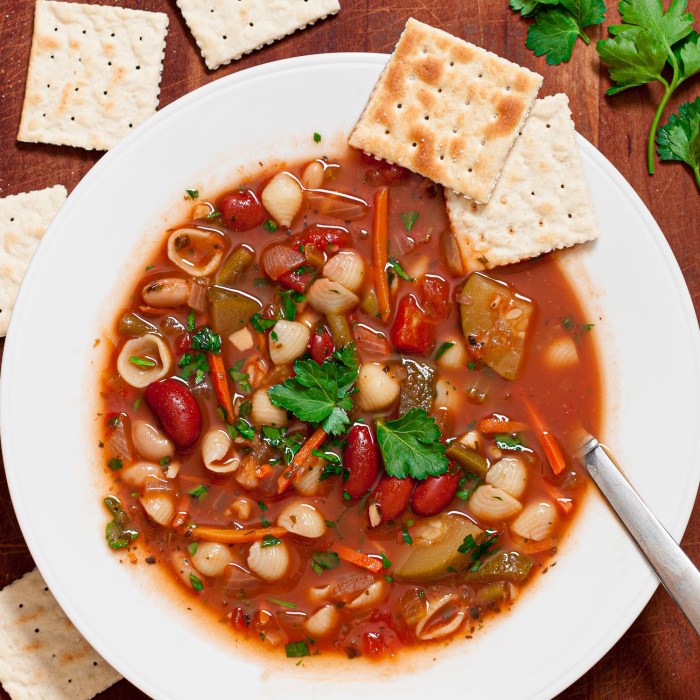
Source: chewoutloud.com
Using high-quality, seasonal ingredients significantly impacts the soup’s flavor. Selecting the freshest vegetables at their peak ripeness enhances both taste and nutritional value. This section details ideal ingredient sources and offers suitable substitutions for various components.
Best Sources: Source tomatoes locally whenever possible, opting for heirloom varieties for superior flavor. Beans can be sourced from local farmers’ markets or reputable grocery stores. Seasonal vegetables should be prioritized, utilizing what’s freshest throughout the year. For example, use summer squash in the summer and hearty winter greens in the colder months.
Substitutions: Kidney beans can be substituted with cannellini beans or chickpeas. Ditalini pasta can be replaced with other small pasta shapes like elbow macaroni or small shells. If fresh herbs are unavailable, dried herbs can be used, but use approximately one-third the amount.
- Tomato Paste Substitute: Tomato puree or crushed tomatoes can be used.
- Vegetable Broth Substitute: Chicken broth or water can be used for a lighter flavor.
- Pasta Substitute: Small-shaped rice or barley can replace pasta for a gluten-free option.
Cooking Methods and Techniques
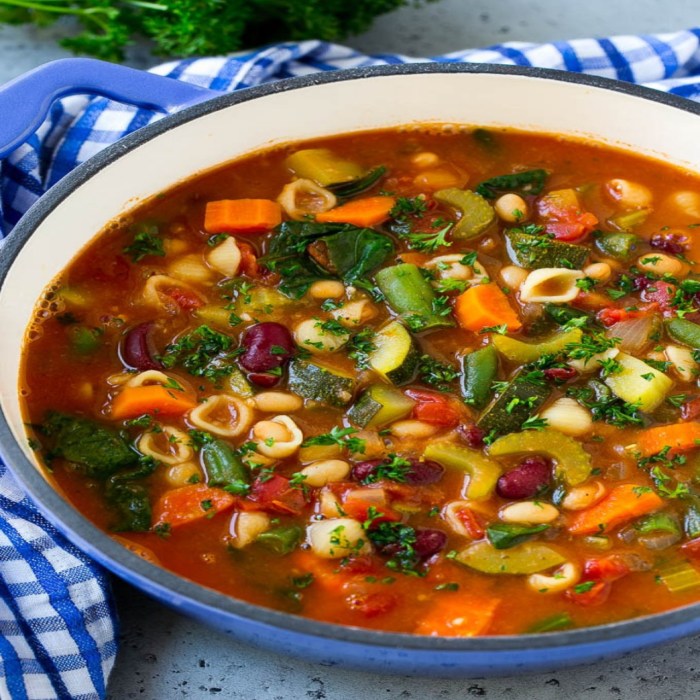
Source: cloudinary.com
This section details the step-by-step cooking process, emphasizing techniques for optimal flavor and texture. Different methods for preparing vegetables are compared and contrasted, along with guidance on adjusting cooking times.
Step-by-Step Cooking Process: Sauté aromatics (onion, garlic, carrots) until softened. Add diced tomatoes and vegetable broth. Simmer until flavors meld. Add beans, pasta, and chosen vegetables. Cook until pasta is al dente and vegetables are tender.
Season to taste.
Vegetable Preparation: Sautéing vegetables brings out their natural sweetness and adds depth of flavor. Roasting vegetables enhances their natural sugars, creating a caramelized texture. Cooking times should be adjusted depending on the vegetable’s density and desired tenderness. For example, harder vegetables like carrots require longer cooking times than softer vegetables like spinach.
Serving Suggestions and Presentation
Elevate your minestrone experience with these unique serving suggestions and presentation ideas. The right bowl and garnishes can transform a simple soup into a visually appealing and delicious meal.
- Serve with a side of crusty bread for dipping.
- Garnish with freshly grated Parmesan cheese and a drizzle of olive oil.
- Add a dollop of pesto for an extra burst of flavor.
For a visually appealing presentation, serve the soup in rustic bowls. The contrasting colors of the vegetables against the deep red of the tomato broth create a vibrant and appetizing display. A sprinkle of fresh herbs adds a touch of elegance.
The ideal serving temperature is warm, but not scalding. The consistency should be slightly thick, with a hearty texture from the pasta and vegetables.
Recipe Scaling and Storage, Olive garden minestrone soup copycat recipe
This section explains how to scale the recipe and Artikels proper storage methods to maintain freshness and quality.
Recipe Scaling: To scale the recipe, simply multiply or divide all ingredient quantities by the desired factor. For example, to double the recipe, double the amount of each ingredient.
| Storage Method | Storage Time |
|---|---|
| Refrigerated | 3-4 days |
| Frozen | 2-3 months |
Dietary Adaptations
This section provides adaptations for vegetarian, vegan, and gluten-free diets.
Vegetarian Adaptation: No changes needed; the recipe is naturally vegetarian.
Vegan Adaptation: Use vegetable broth instead of chicken broth and ensure all other ingredients are vegan-friendly (e.g., check Parmesan cheese substitute).
Gluten-Free Adaptation: Use gluten-free pasta or omit pasta altogether.
Visual Descriptions of the Finished Product
The finished Olive Garden Minestrone soup boasts a vibrant, rustic appearance. The broth is a deep reddish-orange hue, speckled with the various colors of the vegetables—bright green spinach or yellow squash, deep red tomatoes, and orange carrots. The pasta adds textural interest, while the beans contribute a creamy contrast to the broth. The overall aroma is rich and savory, with hints of herbs and simmered vegetables.
When served, the soup’s visual appeal is enhanced by the contrasting colors and textures of the ingredients. A sprinkle of fresh basil or parsley adds a pop of green, while a swirl of olive oil creates a glossy sheen. The rustic bowl complements the hearty nature of the soup, completing the overall presentation.
Questions Often Asked
Can I use canned tomatoes instead of fresh?
Yes, canned diced tomatoes work well as a substitute for fresh. Just be sure to drain them well before adding them to the soup.
How long will the soup keep in the refrigerator?
Properly stored in an airtight container, the soup will keep for 3-4 days in the refrigerator.
Can I freeze this soup?
Yes, this soup freezes well. Allow it to cool completely before storing in freezer-safe containers for up to 2-3 months.
What kind of pasta is best for this recipe?
Small pasta shapes like ditalini, small elbow macaroni, or even broken spaghetti work best. Avoid large pasta shapes that may not cook properly in the soup.

